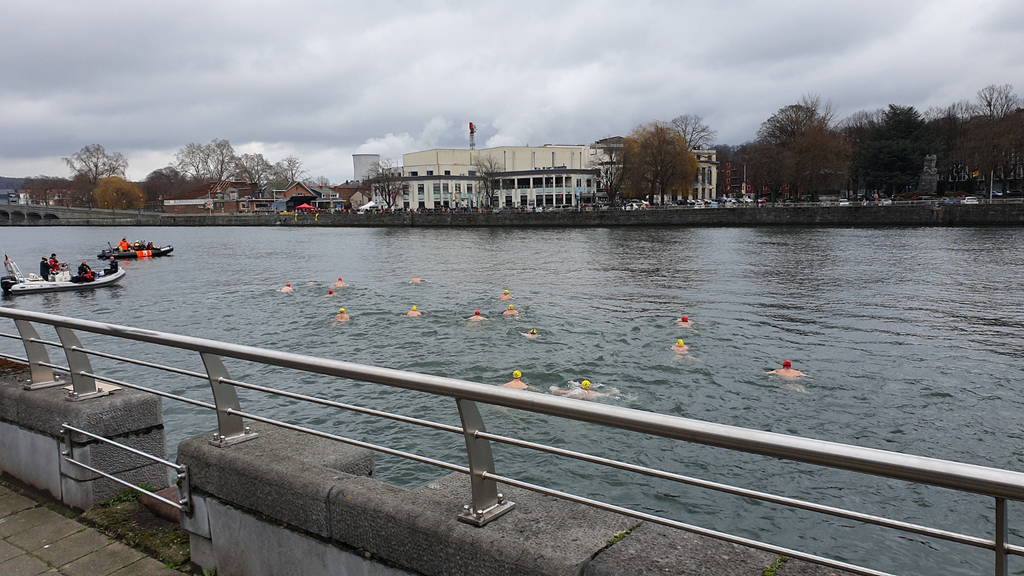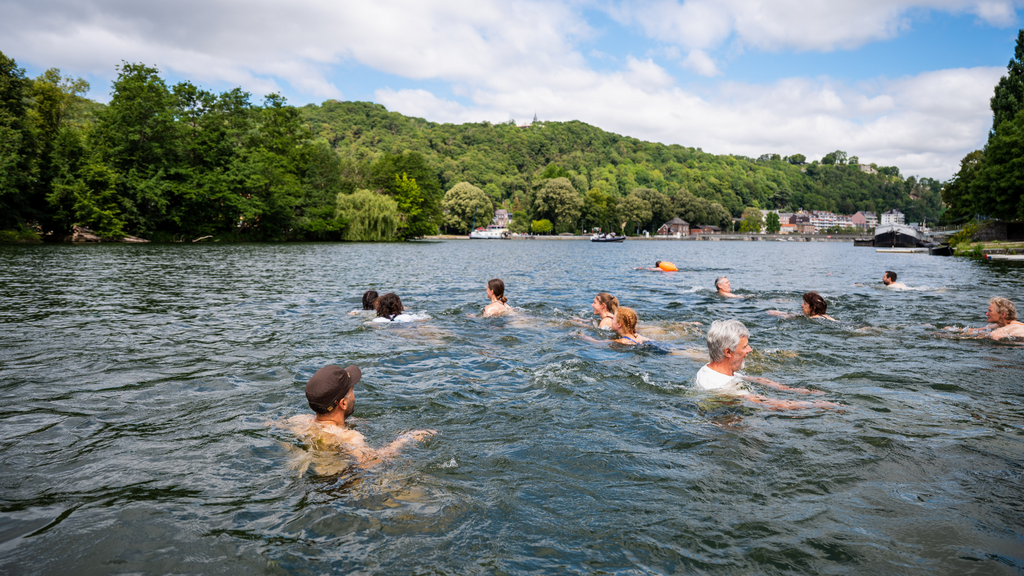Bathing water quality is improving in Europe and more than 85% of sites are now of "excellent" quality, according to a report by the European Environment Agency (EEA).
Among the 21,973 bathing places checked in 2022, 85.7% are of "excellent quality" – up 1.1% since testing three years ago. However, the number of spots that were found to have poor water quality also increased very slightly (+0.2%).
Cyprus, Austria and Greece lead the European ranking, with 99.2%, 96.9% and 95.6% of the bathing waters in excellent condition, respectively. Though not a country renowned for outdoor swimming, Belgium sits firmly in the second half of the table with 76.6%. Poland, with only 55.9%, is lowest in the ranking.

People swim in the Meuse in Huy, during the traditional winter event on Sunday 19 February 2023. Credit: Belga / Laurent Cavenati
Interestingly, Belgium scores above France, where only 75.9% of designated bathing spots are of excellent quality – below the European average and 21st place in the ranking.
Only 1.5% of European swimming locations score poorly. The Netherlands and Sweden are the only two countries where more than 3% of bathing water is of poor quality, especially in some lakes.
Related News
- Discover six wonderful waterfalls in Wallonia
- 'Pure freedom': More open water swimming opportunities on the horizon
Water quality can be "excellent", "good", "sufficient" or "poor" depending on the levels of bacteria detected that signal pollution mainly from sewage or livestock.
Along the coasts, water quality is generally better than inland thanks to the more frequent renewal of water and its capacity for self-purification.
In addition, lakes, rivers and streams are more sensitive than coastal areas to short-term pollution caused by heavy rains or summer droughts.
In coastal areas, the proportion of places with "excellent" water increased to 88.9% in 2022. It is 79.3% for inland bathing waters, a very slight increase.

